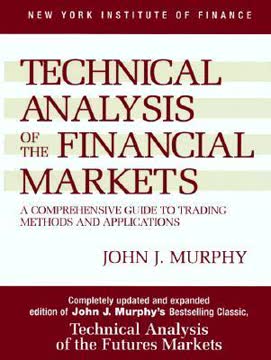Key Takeaways
1. Day trading is high-risk, requires discipline, and isn't for everyone
"If you don't have the knowledge and discipline, you're going to make the same mistakes that everyone else makes."
High stakes, high rewards. Day trading involves buying and selling securities within the same trading day, aiming to profit from short-term price fluctuations. This fast-paced activity requires quick decision-making, constant market monitoring, and the ability to handle stress. It's not suitable for everyone, as it demands a significant time commitment, emotional control, and a deep understanding of market dynamics.
Discipline is key. Successful day traders adhere to strict rules and strategies, avoiding impulsive decisions based on emotions or hunches. They maintain detailed trading journals, analyze their performance, and continuously refine their approach. Without discipline, even the most knowledgeable traders can quickly lose their capital.
Realistic expectations. It's crucial to understand that day trading is not a get-rich-quick scheme. Most novice traders lose money in their first year, and only a small percentage become consistently profitable. Before committing to day trading, honestly assess your financial situation, risk tolerance, and ability to dedicate the necessary time and effort to succeed in this challenging field.
2. Master technical analysis and chart patterns for successful trades
"Reading the market is like getting lost in a dangerous forest. An experienced guide will know what signs to look for, see the animal tracks, and find a way out."
Chart mastery. Technical analysis is the cornerstone of day trading. It involves studying price charts, volume data, and various indicators to identify trends and potential entry or exit points. Key concepts include:
- Support and resistance levels
- Trend lines and channels
- Moving averages
- Candlestick patterns
- Volume analysis
Pattern recognition. Experienced traders can spot recurring patterns that signal potential price movements. Common patterns include:
- Head and shoulders
- Double tops and bottoms
- Triangles (ascending, descending, symmetrical)
- Flags and pennants
- Cup and handle
Indicator integration. Traders often use multiple technical indicators to confirm signals and increase the probability of successful trades. Popular indicators include Relative Strength Index (RSI), Moving Average Convergence Divergence (MACD), and Bollinger Bands. However, it's essential to avoid "analysis paralysis" by using too many indicators simultaneously.
3. Develop a solid trading plan and stick to it religiously
"Plan the trade and trade the plan."
Blueprint for success. A comprehensive trading plan outlines your strategy, risk management rules, and criteria for entering and exiting trades. Key components include:
- Trading goals and objectives
- Risk tolerance and position sizing rules
- Preferred markets and timeframes
- Entry and exit criteria
- Stop-loss and take-profit levels
Consistency is crucial. Adhering to your trading plan helps maintain discipline and reduces emotional decision-making. It allows you to objectively evaluate your performance and make data-driven improvements to your strategy over time.
Regular review and adaptation. While consistency is important, it's also necessary to periodically review and update your trading plan. Markets evolve, and successful traders adapt their strategies to changing conditions. Set aside time each week or month to analyze your trades and refine your approach based on your results and market developments.
4. Use proper risk management techniques to protect your capital
"Cut your losses short and let your winners run."
Capital preservation. Effective risk management is crucial for long-term success in day trading. Key techniques include:
- Position sizing: Limit the amount of capital risked on any single trade
- Stop-loss orders: Automatically exit trades when they move against you
- Risk-reward ratio: Ensure potential profits outweigh potential losses
- Diversification: Spread risk across multiple trades and asset classes
The 1% rule. Many professional traders limit their risk to 1% of their total trading capital per trade. This approach helps prevent catastrophic losses and allows for a series of losing trades without depleting your account.
Scaling in and out. Instead of entering or exiting a position all at once, consider scaling in or out gradually. This technique can help reduce risk and capture profits as the trade develops. For example, you might enter a position with 1/3 of your intended size, add another 1/3 if the trade moves in your favor, and exit in stages as you reach your profit targets.
5. Understand and control your emotions to avoid costly mistakes
"Trading should be as emotional as dropping off the laundry at the dry cleaner."
Emotional intelligence. Day trading can be an emotional rollercoaster, with rapid gains and losses triggering intense feelings. Common emotional pitfalls include:
- Fear: Hesitating to enter trades or exiting too early
- Greed: Holding winning trades too long or increasing position size recklessly
- Revenge trading: Trying to recoup losses with impulsive trades
- Overconfidence: Ignoring risk management after a string of successful trades
Develop mental resilience. Successful traders cultivate a mindset that allows them to remain calm and objective under pressure. Techniques for emotional control include:
- Mindfulness meditation
- Visualization exercises
- Regular breaks and physical activity
- Maintaining a trading journal to identify emotional patterns
Treat trading as a business. Approach day trading with the same professionalism and detachment you would apply to any other business venture. Focus on executing your trading plan consistently rather than becoming emotionally invested in individual trades or outcomes.
6. Learn from professional traders and their strategies
"By learning to trade well, you can trade for a lifetime, and not just a day."
Study the masters. Successful day traders have developed strategies and techniques through years of experience. Learning from their insights can help you avoid common pitfalls and accelerate your growth as a trader. Key areas to focus on include:
- Risk management techniques
- Market analysis methods
- Psychological preparation
- Trade execution strategies
Adapt, don't copy. While it's valuable to learn from experienced traders, it's crucial to develop your own style that fits your personality, risk tolerance, and goals. Experiment with different approaches and refine them based on your results and comfort level.
Continuous learning. The financial markets are constantly evolving, with new technologies, regulations, and trading methods emerging regularly. Successful traders commit to lifelong learning through:
- Books and online resources
- Trading seminars and workshops
- Mentorship programs
- Networking with other traders
7. Practice with paper trading before risking real money
"By paper trading for several months and learning along the way, you gain confidence."
Risk-free learning. Paper trading allows you to practice your strategies in a simulated environment without risking real capital. Benefits include:
- Familiarizing yourself with trading platforms and tools
- Testing and refining your trading plan
- Building confidence in your decision-making abilities
- Identifying weaknesses in your approach without financial consequences
Realistic simulation. To maximize the benefits of paper trading, treat it as seriously as you would real trading. Use the same position sizes, risk management rules, and decision-making processes you plan to employ with real money.
Transition carefully. Once you've achieved consistent success with paper trading, gradually transition to real trading with small position sizes. Be prepared for the emotional differences between simulated and real trading, and adjust your approach as needed.
8. Stay informed about market conditions and economic factors
"I'm scanning all the time. In my office I have seven screens with over eighty stocks."
Market awareness. Successful day traders stay constantly informed about market conditions, economic indicators, and news events that can impact their trades. Key areas to monitor include:
- Major market indices (e.g., S&P 500, Nasdaq, Dow Jones)
- Sector performance and rotation
- Economic calendar (e.g., GDP reports, employment data, Fed announcements)
- Company-specific news and earnings reports
Information sources. Utilize a variety of resources to stay up-to-date:
- Financial news websites and TV channels
- Real-time market data feeds
- Economic calendars and research reports
- Social media and trader forums (used judiciously)
Develop a routine. Establish a daily routine for gathering and analyzing market information. This might include reviewing overnight news, checking economic calendars, and assessing overall market sentiment before the trading day begins.
9. Utilize appropriate order types and execution strategies
"Instead of entering a market order, I would have entered a limit order and taken control of the trade, telling the market the price I was willing to pay."
Order mastery. Understanding and effectively using various order types can significantly impact your trading results. Key order types include:
- Market orders: Execute immediately at the best available price
- Limit orders: Set a specific price for execution
- Stop orders: Trigger a market order when a specified price is reached
- Stop-limit orders: Combine features of stop and limit orders
Execution strategies. Develop techniques for entering and exiting trades efficiently:
- Scaling in and out of positions
- Using multiple time frames for confirmation
- Implementing trailing stops to protect profits
- Adjusting orders based on market depth and liquidity
Avoid common pitfalls. Be aware of potential issues such as slippage, partial fills, and order routing delays. Understand how these factors can affect your trades and adjust your strategies accordingly.
10. Continuously educate yourself and adapt to changing markets
"The market is always right."
Lifelong learning. The financial markets are dynamic and constantly evolving. Successful day traders commit to ongoing education and skill development. Areas to focus on include:
- New trading technologies and platforms
- Emerging market trends and asset classes
- Regulatory changes affecting trading practices
- Advanced risk management techniques
Adapt or perish. Strategies that work well in one market environment may become ineffective in another. Be prepared to adjust your approach based on changing market conditions, such as:
- Shifts in volatility levels
- Changes in sector leadership
- Alterations in market structure (e.g., increased algorithmic trading)
- Macroeconomic trends affecting overall market sentiment
Performance analysis. Regularly review your trading performance to identify areas for improvement. Use a combination of quantitative metrics (e.g., win rate, risk-reward ratio) and qualitative analysis (e.g., adherence to your trading plan, emotional control) to guide your development as a trader.
Last updated:
Review Summary
Start Day Trading Now receives mixed reviews, with an average rating of 3.56/5. Some readers find it informative for beginners, offering basic insights and guidance. However, experienced traders find it too basic and lacking depth. Positive reviews praise its simplicity and foundational knowledge, while critics note its overemphasis on caution and lack of detailed explanations. The book is generally recommended for newcomers to day trading but not for those seeking advanced techniques or in-depth analysis.
Similar Books









Download PDF
Download EPUB
.epub digital book format is ideal for reading ebooks on phones, tablets, and e-readers.







